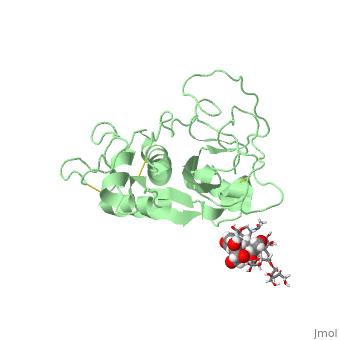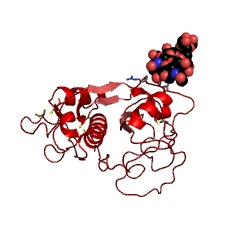Bromelain
From Proteopedia
(Difference between revisions)
| Line 22: | Line 22: | ||
At the optimum temperature, the enzyme acts the fastest, but (at least the fruit variant) is destroyed within few minutes. After an hour at 50 °C (122 °F), 83% of the enzyme remains, while at 40 °C (104 °F), practically 100% remains. As a result of this, the optimum temperature for maximum cumulated activity over time is 35-45 °C. At room temperature, the enzyme can survive at least a week even under multiple freeze-thaw cycles. | At the optimum temperature, the enzyme acts the fastest, but (at least the fruit variant) is destroyed within few minutes. After an hour at 50 °C (122 °F), 83% of the enzyme remains, while at 40 °C (104 °F), practically 100% remains. As a result of this, the optimum temperature for maximum cumulated activity over time is 35-45 °C. At room temperature, the enzyme can survive at least a week even under multiple freeze-thaw cycles. | ||
| - | == 3D Structures of | + | == 3D Structures of bromelain == |
Updated on {{REVISIONDAY2}}-{{MONTHNAME|{{REVISIONMONTH}}}}-{{REVISIONYEAR}} | Updated on {{REVISIONDAY2}}-{{MONTHNAME|{{REVISIONMONTH}}}}-{{REVISIONYEAR}} | ||
| - | [[1w0q]] - | + | [[1w0q]] - pineapple - model<br /> |
== References == | == References == | ||
<references/> | <references/> | ||
Revision as of 07:48, 5 January 2017
| |||||||||||


